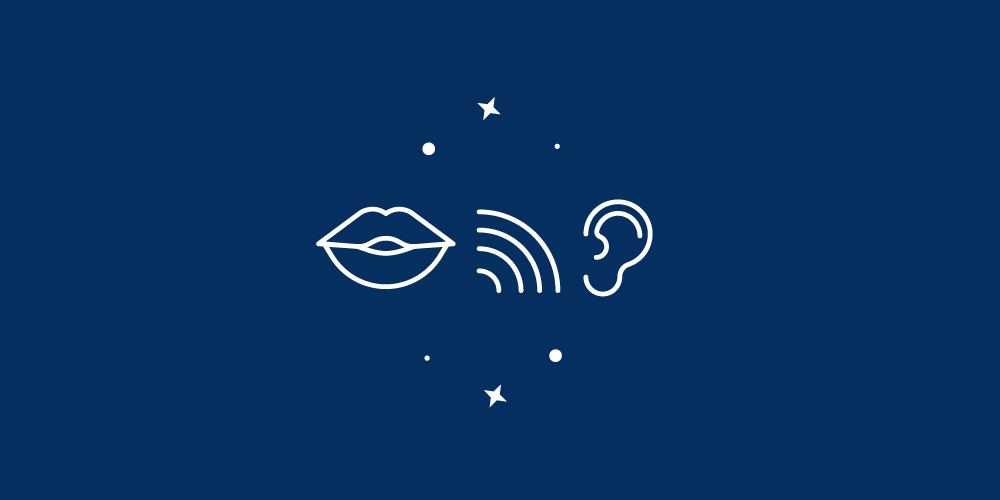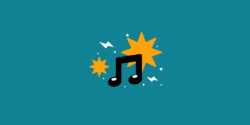Last updated on 10th August 2023
Have you ever found yourself completely immersed in a movie or online video, only to realise that it’s the sound that’s truly bringing the story to life?
Sound, often an overlooked aspect of storytelling, has a remarkable power to shape our emotional experiences and enhance our connection with on-screen narratives.
And – as video marketers – it can be our hidden weapon in engaging and inspiring our viewers!
In the world of sound design, two fundamental concepts play a crucial role in shaping our auditory journey: diegetic sound and non-diegetic sound.
But what do they mean? What’s the difference between them? And how do they interplay to make an impact on viewers?
In this article, we’ll unravel the mysteries behind these intriguing terms and explore how they contribute to the immersive nature of films, games, and other forms of media.
This article is sponsored by Epidemic Sound 💫
We’ve partnered with Epidemic Sound to get you 10% off for 12 months when you sign up for their royalty free music library here: Get 10% off for 12 months >>
Choose from 40,000+ tracks & 90,000+ sound effects in 170+ genres to take your videos to the next level.
Diegetic sound definition
Diegetic sound refers to the sounds within a movie or video, that originate from sources within the fictional world being depicted and are experienced by the characters – usually as an integral part of their reality.
This includes not only sound effects – but also dialogue, music, and environmental sounds present within the scene.
Diegetic sound contributes to the authenticity and immersion of a story, creating a sense of realism for the audience.
It serves various functions, such as establishing atmosphere, conveying information, and enhancing emotional impact.
By incorporating diegetic sound, storytellers create a believable sonic landscape that enhances the overall storytelling experience.
Non-diegetic sound definition
Non-diegetic sound, on the other hand, refers to the sounds that are present in a narrative – but don’t originate from sources within the fictional world.
Non-diegetic sounds very much come from behind the fourth wall and aren’t implied to be heard – and so, aren’t acknowledged – by the characters.
This type of sound, essentially, exists solely for the audience.
It includes elements like background music, voiceover narration and certain types of sound effects.
Non-diegetic sound is often used to heighten emotions, guide the audience’s interpretation, create a specific mood, or provide narrative cues.
It serves as a tool for storytelling, manipulating the audience’s perception and enhancing the narrative impact beyond the boundaries of the story world.
What’s the difference between diegetic and non-diegetic sound?
Diegetic sound is experienced by the characters, while non-diegetic sound is experienced by the audience.
Diegetic sound emanates from sources within the fictional world and is heard by the characters, contributing to the realism and immersion of the story. Non-diegetic sound is not heard by characters, doesn’t originate from within their world, and tends to be only for the benefit of the audience.
Often in film, games and marketing videos, diegetic and non-diegetic sound will be present at the same time.
This video does an excellent job of breaking down the differences and showing how they work together:
Diegetic sound examples
Let’s say a character in your video is at a music concert.
In the background of the video, we hear pumping music while our character dances away.
That’s diegetic music: music that’s heard and experienced by the character.
It’s sometimes called ‘source music’ and doesn’t have to be live – it could equally describe sounds like music played from a jukebox, or a car flying past with its radio blasting.
And what about sound effects? Well, let’s say we have another character, at the beach.
If we hear seagulls calling, a character’s phone buzzing when they receive a text, the gentle splashing of the waves hitting the shore – these are diegetic sound effects, clearly created in the fictional world and audible to the character.
Non-diegetic sound examples
On the other hand, non-diegetic sound exists outside the story world and is meant solely for the audience’s experience.
So let’s say we have a character in a video who’s taking a peaceful walk through the countryside. In the background, we hear a peaceful, serene musical score. This is purely for the audience, not audible to the character – meaning we can say it’s non-diegetic music. (A very popular use of non-diegetic sound in film, hence the popularity of film soundtracks!)
And, equally, we may also hear sound effects that aren’t heard or experienced by the character – a voiceover, a ‘ping’ as they have a fantastic, ‘lightbulb moment’ idea, or a cymbal crash as they take a pratfall.
These are non-diegetic sound effects: existing purely as cues for the audience to pay attention to something, laugh or react in some other way!
Other examples of non-diegetic sound would include elements like background music and voiceovers that enhance the storytelling, create moods, and guide the audience’s emotions.
What about trans-diegetic sound?
We’ve already established that there can be an overlap between these types of sound.
It’s not all that common, but many diegetic sounds can cross over into becoming non-diegetic sounds – and vice versa! This is covered by the term ‘trans-diegetic sound.’
For example, in this scene from Spider Man: Into the Spider-Verse, we see a character listening to music on his headphones – clearly diegetic – but as the scene progresses, the headphones come off, and the music continues as non-diegetic background music for the subsequent montage.
Removing the innate difference between diegetic and non diegetic sound can also create a comedic, 4th-wall breaking effect – for example, if the characters in a scene begin to be able to hear a voiceover track and respond to it. This takes a type of sound the audience are familiar with being non-diegetic, and makes it diegetic instead – fertile ground for comedy.
Thanks for reading!
And that’s about it! The term ‘diegetic sound’ derives from the Greek word “diēgēsis” (διήγησις), which roughly translates to “telling a story.”
And the important thing to remember is that a blend of diegetic and non-diegetic sound can really help you do just that: create a potent storytelling soundtrack that engages and enthrals your audience.
Here at Wyzowl, we’re video marketing experts and understand the power of storytelling – and the role sound plays in this. Get in touch and let’s talk about how we can help do it for your brand!







